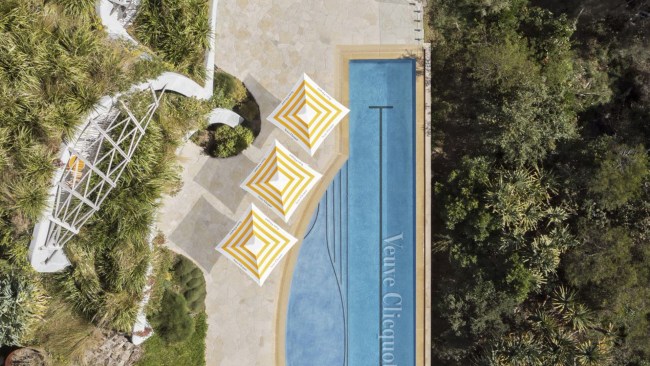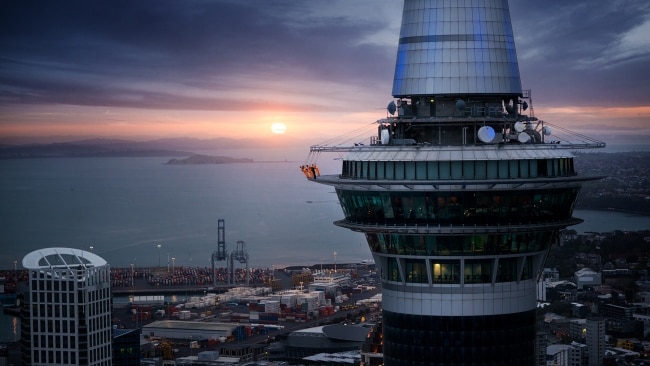Lucca, Italy: Tuscan taste of history, fine food and Puccini
Fine music and festivals define a famous composer’s birthplace.

1. WALK THE WALL: The first thing you notice about Lucca is its historic encircling wall. Four kilometres long and up to 30m thick, it provides an imposing welcome long after it was built to protect residents of this Tuscan town from invaders; now it is a gracious promenade. While many locals live in the newer part of the city, about 10,000 residents still call the charming area within Lucca’s sturdy walls home. The best introduction to their coveted patch is the wonderful view from atop the wall on a grand, tree-lined path. Popular with pedestrians, cyclists and rollerbladers day and night, a walk here feels more like a stroll through a spacious park, even though you are several storeys above street level. Given the maze of Lucca’s streets, it’s also a useful spot for reconfiguring your bearings; if you’re lost, just find the closest path to a wall entrance, walk up, and simply look down.
2. STRONG AND FREE: Founded by the Etruscans, Lucca became a Roman colony in the second century BC and during the Middle Ages was on the pilgrim route between Rome and Santiago de Compostela in Spain. The wealth it generated from being a leading producer of brocade for Europe helped ensure the city was never attacked (even the all-powerful Medici family failed to conquer Lucca) and a plethora of stone buildings helped prevent devastating fires. Today that makes for a beautifully preserved destination where old city buildings dotted with “Libertas” inscriptions (Lucca was a free and independent republic for 500 years until 1799) sit comfortably with their shiny, modern interiors. Two-hour guided walking tours leave from the main tourist office every day and cost €10 ($14.80) a person.
More: lookatlucca.eu.
3. SONGS OF SUMMER: The arrival of the French in 1799 ended hundreds of years of independence. Napoleon I took over in 1805 and installed his sister Elisa as Duchess. She lived in a palazzo in the centre of the city and named the square it fronted in her brother’s honour. Piazza Napoleone remains one of Lucca’s most notable public spaces, a rare sycamore-lined square, site of innumerable events throughout the year. Lucca’s summer festival is staged here every July and has featured a famous roll call, from Bob Dylan to Stevie Wonder. This year’s line-up included Tom Jones and Van Morrison.
More: summer-festival.com.
4. VIEW AND CHEW: One of the most scenic places to dine is San Colombano, an indoor-outdoor restaurant that sits on the city wall, on a particularly wide, tree-lined section, and incorporates some of its features (one of the restaurant’s windows takes up the space once occupied by a cannon). With views over the rooftops and out towards the stately cathedral, you can opt for cake and coffee at the cafe on one side of the entrance, or a meal at the restaurant on the other. The expansive menu of pizzas, calzone, salads and pasta reveals top quality food for a lot less than you’d pay in Australia.
More: ristorantesancolombanolucca.it.
5. MUSICAL MASTER: From woven fabrics to cigars, Lucca has a long history of producing fine goods. But its most famous export is the composer Giacomo Puccini (La Boheme, Tosca, Madama Butterfly). Born in 1858, he came from a long line of musical minds; five generations of his family were organists and composers at the local cathedral. His life is continually celebrated in his home city; at his former apartment, on the middle level of a residential building and now a museum, his old Steinway is displayed, complete with its well-worn seat. And every night a changing concert of his work is held in the Church of San Giovanni, a majestic space of marble columns beneath an ornate ceiling.
More: puccinielasualucca.com; puccinimuseum.org/en/.
6. GARDEN GAMBOL: By early afternoon, many businesses are closed for a few hours. You could take a nap, like many locals, but if you’re still keen to be out, the botanic garden is a good option. In a city where space is limited by the wall, this is a rare patch of green expanse. Founded in 1820, the garden was initially part of the local university and used for botanical research. Today it features a collection of edible wild plants, and while not overly spacious or pristine, it is a shady oasis on a hot summer’s day.
More: ortobotanicodilucca.it.
7. BUY, BUY: With so many beautifully preserved storefronts, even window-shopping is a delight. Many businesses are on lively Via Fillungo, but surprisingly few are major chain stores. Amid this eclectic selection of boutiques, there are countless carefully preserved facades, which add a lovely hint of mystery to a simple stroll along the old cobbled streets; the beautifully gold-leafed window of an old perfumery, for example, no longer sells scents, but instead reveals a gorgeous selection of handcrafted chocolates. Whether it’s watching the local barber at work, or trying on soft leather gloves in a cavernous old space that appears to have been operating for decades, even those who don’t rate shopping highly should enjoy meandering.
8. LETHAL LEGACY: A 600m walk from Puccini’s boyhood home brings you to the Roman Amphitheatre, which used to be the scene of human-only gladiator fights (animals were not used), and up to 10,000 onlookers at a time would watch the gruesome spectacle. Today the area, which subsequently became a fruit and vegetable market, has been gentrified, and the restaurants and shops that surround the old arena are popular with locals and visitors. Some of the gladiatorial spectator seats, meanwhile, have been incorporated into neighbouring apartments.
9. COMFORT FOOD: Sitting on the edge of Piazza del Carmine since the 1950s, Gigi Trattoria is more comfortable than swish, and the food is delicious. Bread, pasta and desserts are made fresh daily, and simple dishes, including the homemade macaroni with tomato, pecorino and thyme, are wonderful. The small cover charge, which is customary in many restaurants, includes a bread basket and homemade biscuits.
More: gigitrattoria.it.
10. IF WALLS COULD TALK: To get a true taste of local life, it helps to stay within Lucca’s walls. A short walk from one of the main gates to the city, Albergo San Martino comes with its own quirky history. A former brothel, its suites are named in honour of the ladies who used to work there. Our top-floor room is dedicated to Ugly Carla, but the curious name does not do justice to the comfortable space, which looks out over neighbouring terracotta rooftops and the cathedral tower towards the nearby piazza. An extensive continental breakfast is served on the front terrace, accompanied by different music each morning, such as Andrea Bocelli on Wednesdays and Pavarotti to herald the weekend.
More: albergosanmartino.it.




To join the conversation, please log in. Don't have an account? Register
Join the conversation, you are commenting as Logout